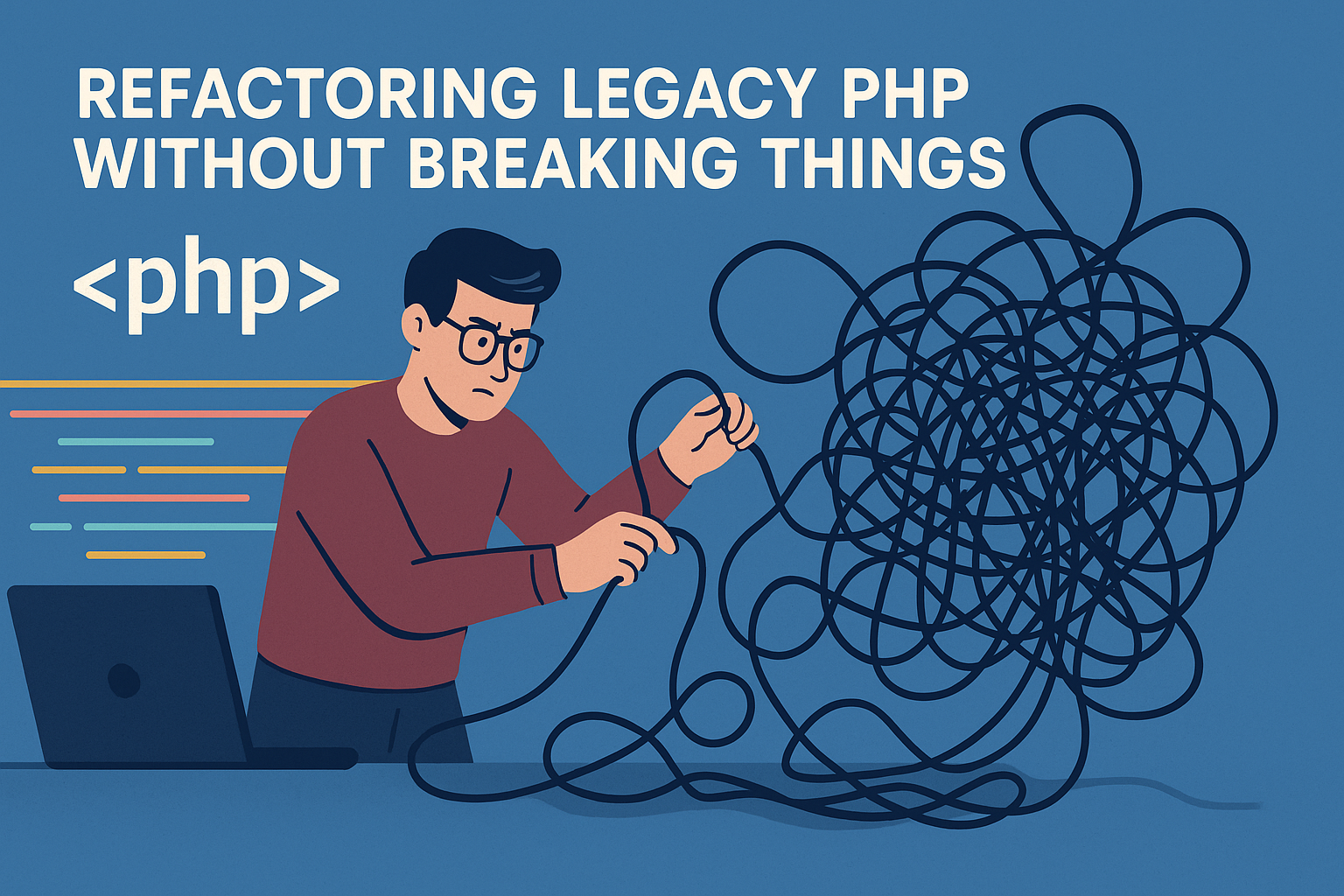Legacy PHP code has a way of haunting you. Whether it’s procedural scripts written 10+ years ago, a half-upgraded framework, or a mix of spaghetti logic and business-critical features—at some point, you’ll be tasked with refactoring it. The trick is doing it without breaking everything in production.
Here’s my playbook, built from years of wading through gnarly codebases.
Step 1: Stabilize Before You Refactor
Never start refactoring legacy code without first putting a safety net in place. That means:
- Version control (Git everything, even if you have to start from scratch).
- A staging environment that mirrors production.
- At least basic tests, even if they’re just smoke tests.
I once inherited a legacy system that had no version control. Step one was initializing Git and committing the entire codebase. Even without history, it gave me a baseline for tracking changes.
Step 2: Write Tests Around Critical Paths
Full test coverage is impossible right away, but you can target the code that matters most—login, checkout, payment processing, API endpoints. Even basic tests like this can save you:
public function testLogin()
{
$response = $this->post('/login', [
'email' => '[email protected]',
'password' => 'secret'
]);
$response->assertStatus(200);
}Focus on stability first, elegance later.
Step 3: Identify and Document Pain Points
Legacy code usually has hotspots—giant functions, duplicated logic, magic numbers. I document these in a running list and prioritize based on how often they cause bugs or slow down development.
Example signs of a hotspot:
- A single PHP file with 3,000+ lines.
- A function with 10+ arguments.
- Conditionals stacked like Jenga towers.
Step 4: Refactor in Small, Safe Steps
Don’t rewrite the whole app. Refactor incrementally:
- Extract large functions into smaller ones.
- Move repeated logic into helpers.
- Replace magic values with constants.
For example:
// Legacy
if ($status == 1) { $discount = 0.10; }
if ($status == 2) { $discount = 0.20; }
if ($status == 3) { $discount = 0.30; }
// Refactored
$discountRates = [
1 => 0.10,
2 => 0.20,
3 => 0.30
];
$discount = $discountRates[$status] ?? 0;Cleaner, safer, easier to extend.
Step 5: Modernize Gradually
Legacy PHP often lacks namespaces, autoloaders, or PSR compliance. Introduce these slowly:
- Use Composer for dependencies.
- Introduce PSR-4 autoloading.
- Start applying PSR-12 coding standards.
This can be as simple as reorganizing a folder structure and updating composer.json.
Step 6: Track Technical Debt Transparently
Keep a changelog of “what’s been fixed” and “what still stinks.” Transparency helps stakeholders understand why progress feels slow and ensures future devs know where the dragons are.
Step 7: Resist the Urge to Rewrite Everything
I’ve been there—tempted to scrap it all and build fresh. But rewrites are risky, time-consuming, and expensive. Most of the time, incremental refactoring wins.
Joel Spolsky said it best: “The single worst strategic mistake is to rewrite code from scratch.” I agree. Instead, modernize piece by piece.
Final Thoughts
Refactoring legacy PHP isn’t glamorous, but it’s where you earn your stripes as a developer. The goal isn’t perfection—it’s making tomorrow’s changes easier than today’s. Small wins compound over time, and before you know it, that gnarly mess becomes a maintainable system.
If you’re staring down a legacy codebase, take it one step at a time. Stabilize, test, refactor incrementally, and resist the temptation to bulldoze it all. Trust me—it’s worth it.
